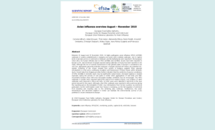Surveillance report: Avian influenza overview August – November 2018
The “Avian influenza overview” report is published quarterly and provide an update of the developments of avian influenza viruses in EU/EEA and worldwide, in particular with a view to describe the evolution of virus spread from certain regions towards the EU. In case of significant changes in the epidemiology of avian influenza, these reports could be needed more frequently.
The report is published jointly by the European Food Safety Authority (EFSA), the European Centre for Disease Prevention and Control (ECDC) and the European Union Reference Laboratory for Avian influenza (EURL). Avian influenza is an infectious viral disease in birds, including domestic poultry. Avian influenza is mainly found in birds, but under certain circumstances infections can also occur in humans even though the risk is generally very low.
Executive Summary
Between 16 May and 15 August 2018, three highly pathogenic avian influenza (HPAI) A(H5N8) outbreaks in poultry establishments and three HPAI A(H5N6) outbreaks in wild birds were reported in Europe. Three low pathogenic avian influenza (LPAI) outbreaks were reported in three Member States. Few HPAI and LPAI bird cases have been detected in this period of the year, in accordance with the seasonal expected pattern of LPAI and HPAI. There is no evidence to date that HPAI A(H5N8) and A(H5N6) viruses circulating in Europe have caused any human infections. The risk of zoonotic transmission to the general public in Europe is considered to be very low. Several HPAI outbreaks in poultry were reported during this period from Russia. The presence of the A(H5N2) and A(H5N8) viruses in parts of Russia connected with fall migration routes of wild birds is of concern for possible introduction and spread with wild birds migrating to the EU. Although few AI outbreaks were observed in Africa, Asia and the Middle East during the reporting period, the probability of AI virus introductions from non-EU countries via wild birds particularly via the north-eastern route from Russia is increasing, as the fall migration of wild birds will start in the coming weeks. Further, the lower temperatures in autumn and winter may facilitate the environmental survival of avian influenza viruses potentially introduced to Europe.
Download





